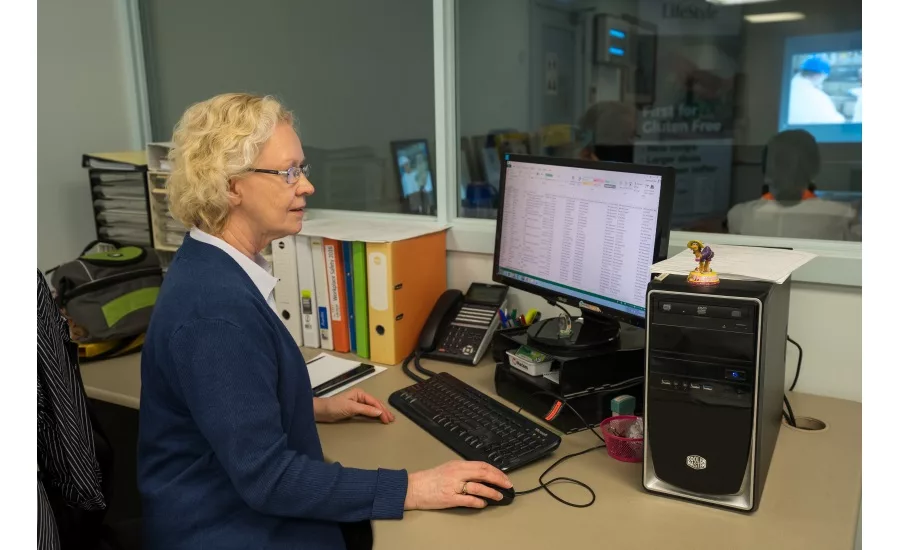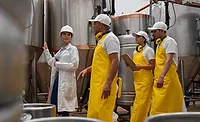Strategies for employee management, training and workforce development





Training employees is an essential part of food safety, as is employee management and workforce development.
Strategies
“Successful business are the ones that have streamlined processes and clear expectations for their workforce. In order to get results, managers must set goals and give their employees clear directions,” says Bart Dobek, president, BD Food Safety Consultants, LLC, Naperville, IL.
“Setting Goals and Giving Clear Directions” is one of the strategies he uses, as well as:
- Avoid micromanaging
- Another important strategy for managing your employees is to avoid micromanaging and to give your employees enough share in decision-making process. Micromanaging may affect employee performance and very often is seen by an employee as a lack of trust from their manager or employer, he says.
- Internal branding
- Satisfied employees will promote your business. As a manager, you want to make sure that people you manage fill comfortable at their workplace. In addition to pay and work atmosphere, more businesses are including perks to their offer. Allowing employees to work from home on certain days or company outings are just some examples of “extras” that we offer to our consultants, Dobek adds.
Workforce management can be extremely difficult, and most third-party systems were built for office environments—which are a piece of cake compared to the operational realities of food manufacturing facilities, says Michael Grigsby, president, Intertek Alchemy, Austin, TX. “So the key is to ensure your system is built specifically for the realities you face.”
Intertek Alchemy’s solution is a centralized system that can work across any facility, tracking training and validation checks even if there’s no internet connection, he says. The activity is then synced when returning to connectivity, putting all activity at your fingertips for instant audit-ready reporting.
“But it’s just as important to be forward-thinking in workforce management. Intertek Alchemy’s platform makes it easy to build Learning Plans tailored to each specific job role, and to keep track of every employee’s progress. This has become such an important tool, that we’re actually developing right now brand new technology that will take this to an entirely new level,” Grigsby explains.
“This new technology will put the collective knowledge, skill, and expertise of every employee in the palm of your hand (via a mobile app). For example, if an employee no-shows, you can use our new technology to instantly see any other employees in the facility that are validated to run that equipment or perform that job. So you can effectively avoid downtime, which is the end goal of effective employee management.”
Training and workforce development
Looking for quick answers on food safety topics?
Try Ask FSM, our new smart AI search tool.
Ask FSM →
Continuous growth of the business is strictly related to employee training and development; training is one of the key resources that managers must provide their employees, says Dobek.
“As educators, we must continually deepen our knowledge to make our training courses more attractive. At BD Food Safety Consultants LLC, we have a set budget for the year for training and other events that are key in employee development such conferences and seminars,” he explains.
“Our company is also a leader in workforce education, and we believe in technology as a tool for effective training. BD Food Safety Consultants developed an Online Training System that [will] help small and medium businesses to comply with Food Safety and Food Hygiene training as required by FDA / USDA regulations and 3rd party audits,” Dobek adds.
“Training modules within our system were developed using adult teaching techniques and interactivity was built into the content. Element of interactivity helps the audience to retain more information and improves training effectiveness. Our system allows for training verification through “knowledge checks” and provides businesses with convenient reporting and training rosters.”
With evolving world and technology, “pen and paper” is no longer an effective way of training your workforce, notes Dobek.
Intertek Alchemy’s approach to training and workforce development is that it’s all about engagement, says Grigsby.
“Engagement and continuous learning. Too many companies have training, and think that checks the box, and it’s all done. But just having and delivering training doesn’t mean mission accomplished. Without engagement, there’s the likelihood of ‘in-one-ear-out-the-other’ syndrome,” he explains.
This is why engagement is always baked in to Intertek Alchemy training programs, Grigsby says.
“This could be with knowledge check questions every few minutes, friendly competitions during group training, even one-on-one reinforcement on the floor. The trick is making all this as easy as possible for supervisors and training leads. We develop blueprints and observation guides to facilitate the interaction, creating positive dialogue—and engagement.
Research continually shows that workers who are engaged with their work and supervisors are happier, more productive, and more likely to learn new skills and progress in their jobs, suggests Grigsby.
“We see it come true every day! Which is the most rewarding part about our own jobs,” he says.








.webp?t=1721343192)
